

Capturing Beauty
by
John Presco
Copyright 2024
When I was thirteen, my best friend Bill Arnold took me to a restruant/bar located a block away from the Parkway theatre theater located on Park Blvded. We had bought pipes that we tamped and lit as the waritress put our cups of coffee on the table.
“From now on, this is our Bohemian cafe where we will meet and discuss literary and artituc matters. I am Jack London, and you are Geroge Sterling!”
A few months earlier, Bill encourage Nancy Van Brasch nee; Hamren to kiss, in the boy’s room on San Sebastian. I had never kissed a girl. This was part of my Bohemian Training. Bill, Nancy, Angel, and myself created a Bohemian Colony near Lake Merritt, near where Jack London lived. Jack London and George Sterling would found the Carmel Bohemian Colony, where Christine Rosamond Benton had two galleries. The first Rosamonds gallery was at the Four Corners. Rosamond had a partner, Lawrence Chazen who was J.P. Getty’s financial advisor, along with Newsom and Pelosi.
I talked with Crol Williams about how Sydney Morris destroyed the artistic legacy of Brett Weston. I told her Morris had done the same with my families creative legacy. I told her that Sydney’s law partner, Robert Brevoort Buck, legally structured the Buck Institute, establish by him kin, that is valued at a billion dollars. It funds art groups, and, Alcohol Justice. I told her Liz Taylor is my cousin. Her son married Aileen Getty.
“We’re talking about a Art Dynasty!”
Above are two photographs of the most important in Rosemary Rosamond’s life. Her father, Royal Rosamond, is holding his daughter, Lilian. Vic Presco is holding his newborn on, Mark Presco. I believe this was take in Westwood. These two fathers – seeded The Rose of the World Art Dynasty!
“At the center of the dispute is Weston”s long-time agent and friend, Carol Williams, owner and director of the Photography West Gallery in Carmel, and Carmel attorney Sidney Morris, executor for the Weston estate.”
To be continued
The Getty Family Tree
Posted on June 20, 2023 by Royal Rosamond Press
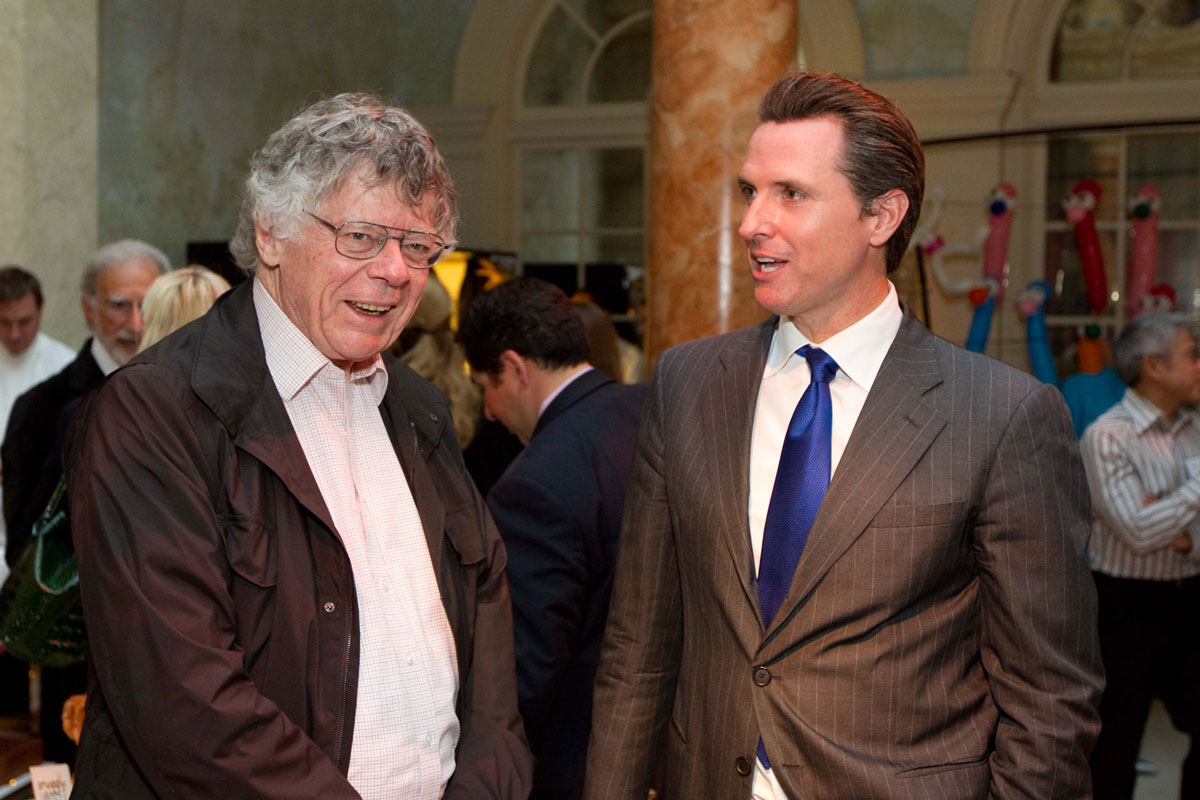
Gordon Getty and Gavin Newsom attend an event benefiting the UCSF Childrens Hospital in 2010. (Drew Altizer)
Here, is the Gavin Newsom connection to the Getty and Pelosi family;
https://www.newsweek.com/surprising-newsom-pelosi-harris-ties-getty-oil-dynasty-1717810
You will find a genealogy that shows Michael Wilding, saying “Liz Taylor’s son” – and that’s it! Was this deliberate, or, are folks plain stupid? The Carl Janke family, who founded Belmont, are in the Getty tree. Founders of a swank city is a feather in the Getty cap. Two Gettys were Anglophiles. One was married to the actress, Talitha Getty, who I place next to Liz – and all the actors in her Rosy tree.
John Presco
https://www.latimes.com/projects/la-pol-ca-gavin-newsom-san-francisco-money
https://en.wikipedia.org/wiki/Getty_family
Rose & Rosamond of Downton Abbey
Posted on February 3, 2015 by Royal Rosamond Press

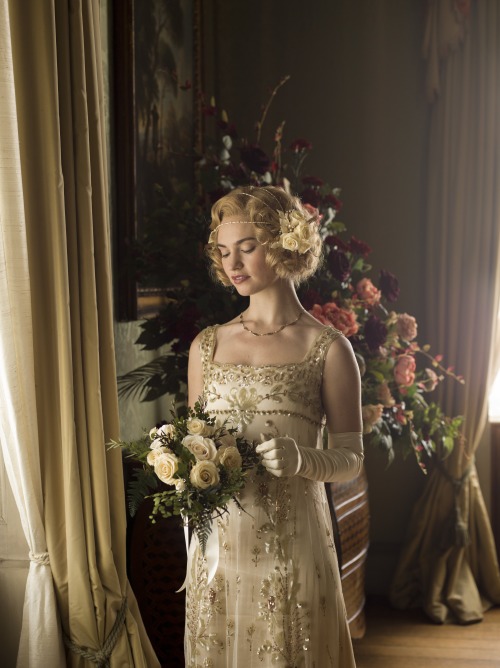
Sydney Morris Destroys Bill and I
Posted on March 20, 2021 by Royal Rosamond Press
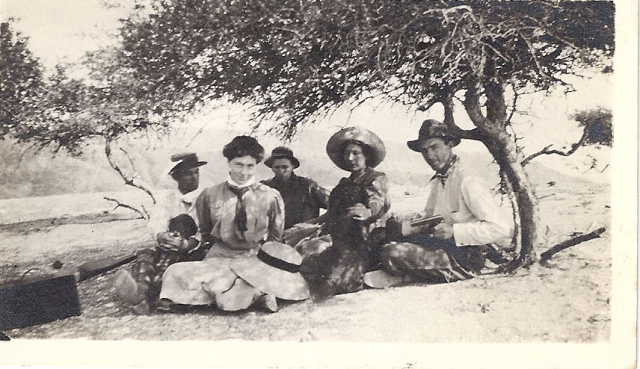
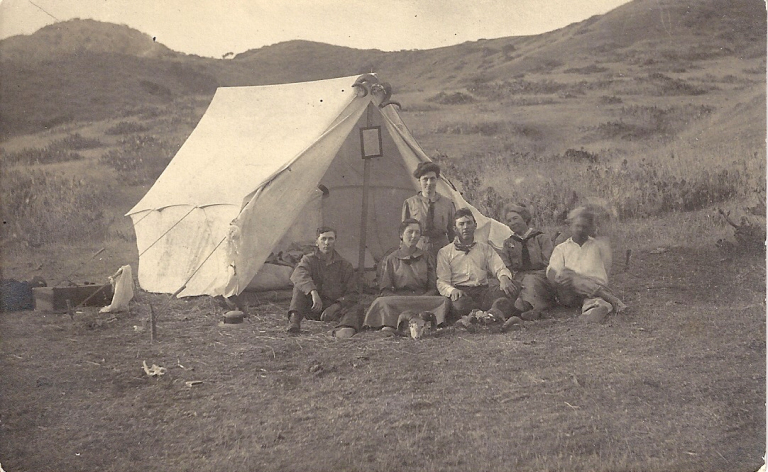
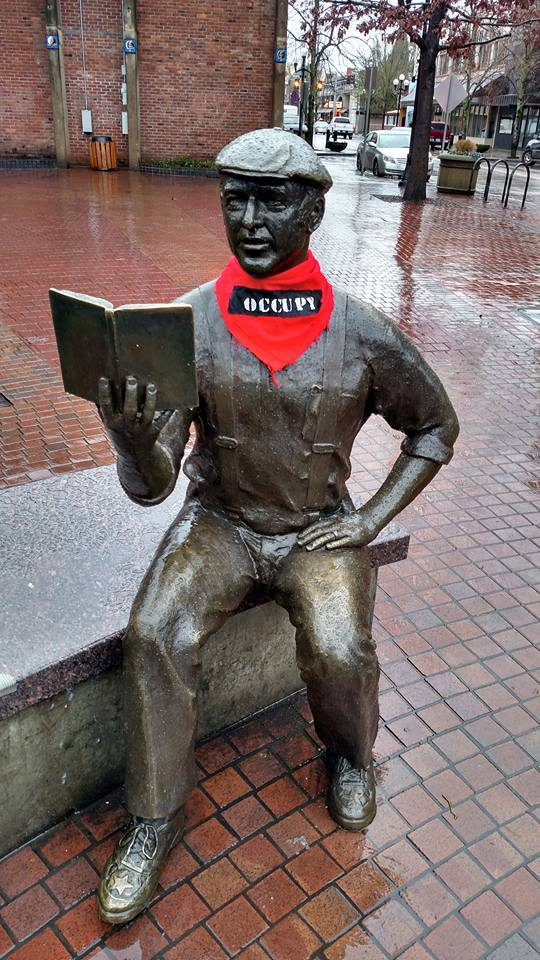
Bill Arnold and I met in art class when we were twelve. We were famous artists at thirteen. We were Jack London and George Serling, we were Kerouac and Cassidy. We smoked pipes and philosophized. We read George Bernard Shaw, and listed to his Man and Superman. I will now compare him to Norbert Davis, and even Ludwig Wittgenstein. Bill was the love of Nancy Hamren’s life. She got me on the bus with her good friend, Ken Kesey, in hope he could help me with my writing. We used to go camping for a week every year. If he had seen the photos of my grandfather camping with other writers – he would have been very excited. Hi father beat him almost every day. He played football without his shirt letting his peers see the angry welts his father gave him.
Can it be said Ludwig Wittgenstein could have SAVE the life of Norbert Davis (seen in photo above sitting next to my grandmother) if he had followed through with his desire to meet with him?
John Presco
Copyright 2021
“It’s even more obvious in her work on ‘The Crossing’. She was very depressed, dealing with her unresolved feelings for her childhood sweetheart, Bill. He died before she could work it through with, or about him, and she resented Greg because she said he didn’t deliver on his promise to tell Bill how she felt. She really loved him, and maybe Greg saw that as a intrusion. Anyway, Christine told me he never delivered her message. Later. Bill pulled his car onto the tracks and died under the wheels of a train – a suicide according to Christine – and she never got over her failure to tell Bill her feelings for him. She felt very strongly she could have saved him, if he’d only known.”
The fisherman’s Home
The twilight sad, the sea – a certain waste;
The mainsail taut, to part the jib inclines:
Faster then the breeze our hearts make haste
With fishes from the trolling lines.
Ahead the boat the gloomy island looms
In direful silence, and-to-me-
In vagueness as of aged tombs,
In awesome outline giant mystery.
Behold! Within the lea a light’s bright flash;
Then hidden in the swells-below, above:
The real, infinite and mysteries crash:
Behold a domicile of love

Carrie Sterling and others at Sterling Cottage.
https://en.wikipedia.org/wiki/George_Sterling
Sterling brought two boyhood friends, W.W. Woods and Gene Fenelon, to Carmel to construct an American Craftsman cottage on a one acre hilltop in the Eighty Acres tract, northeast of Ocean Avenue and Junipero Street. Artist Charles Rollo Peters and Robinson Jeffers were influential in Sterling’s move to Carmel.[9] The house had a thirty-foot-long by eighteen-foot-wide living room with oiled redwood paneling, a fireplace, and chimney made from Carmel stone. It had views of Carmel Valley, Carmel River, and the Santa Lucia Mountains.[8]
According to Morris and former estate co-executor and Weston friend Bob Byers, there were 29 versions of estate plans for Weston during his lifetime, “the common theme being gifts to lady friends and family members and to ultimately take care of [Weston”s daughter and sole heir] Erica,” according to Morris.
The point of contention between Williams and Morris has been the sale of Weston”s entire photographic archive to an Oklahoma banker and art collector named Christian Keesee, as well as the status of ongoing print sales, and a previous publishing contract between Weston and the Photography West Gallery.
“My concerns for Brett”s work is it”s never been organized or assembled. No scholars or public institutions have had an opportunity for study,” adds Williams. “My overwhelming response is sorrow about the irony of it. It seems so sad it was turned into this big commercial investment. Brett was a visual genius and had as sophisticated an eye as perhaps the most sophisticated 20th-century painters and abstractionists. That is his legacy.
https://www.poetryfoundation.org/articles/146051/bohemian-tragedy
Bohemian Tragedy
The rise, fall, and afterlife of George Sterling’s California arts colony.
In 1905, the poet George Sterling moved to Carmel-by-the-Sea, a coastal hamlet two hours south of San Francisco, to start an artist colony. The 36-year-old Sterling, nicknamed the “King of Bohemia,” was already prominent in literary San Francisco. He was Jack London’s best friend, a student of Ambrose Bierce, and the author of a single volume of poetry, The Testimony of the Suns, and Other Poems, published two years earlier.
At the time, Carmel was a tiny town near a Spanish mission that Father Junípero Serra founded in 1771. The stunning scenery—white-sand beaches, pine forests, and dramatic vistas—prompted several real estate developers to pitch Carmel as a resort. When would-be buyers resisted settling into the remote town, accessible only by stagecoach, the price of lots dropped: a $500 cottage could be secured with a $10 down payment or about $6 a month to rent, affordable even for artists.
Sterling envisioned a pastoral environment of beauty and simplicity where artists could devote themselves to their work. It would be a Bohemian Utopia, an idea he defined in a letter to Jack London:
“There are two elements, at least, that are essential to Bohemianism. The first is devotion or addiction to one or more of the Seven Arts; the other is poverty … I like to think of my Bohemians as young, as radical in their outlook on art and life; as unconventional.”
Sydney Morris and Brett Weston
Posted on March 20, 2021 by Royal Rosamond Press
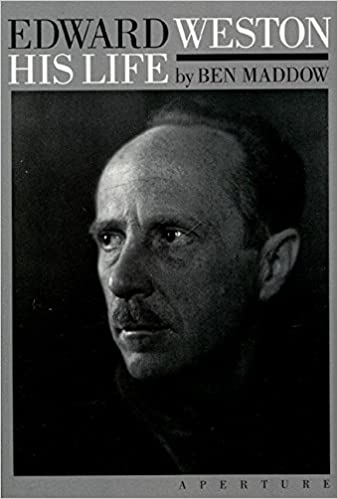
Sydney Morris works for, or is a partner of Robert Buck, who put together the Buck Foundation employing his legal expertise. Morris destroys the estate of Brett Weston and Christine Rosamond Benton, two of Carmel’s most creative citizens. Jack London and George Serling founded this famous Bohemian Mecca. Ben Maddow wrote Edward Weston’s biography.
Here is a Buck Baby going after Gavin Newsom thinking they are saving Californians from becoming alcoholics or – whatever! The whole board ignores me – and my late sister.
John Presco
One of modern photography’s greatest pioneers, Edward Weston awakened his viewers to the sensuous qualities of organic forms. In this biography Ben Maddow draws heavily on Weston’s uncut journals and letters and on the reminiscences and written accounts of his closest friends and family to reveal the man behind the opaque formalism of the photographs.
Lawsuit Against Buck, Chazen, Pierrot, and Comstock | Rosamond Press
Governor Newsom: Don’t Let Your Wine Interests Trump Your Ethics – Alcohol Justice
So back to the pun in our title: Gov. Newsom, will your wine interests Trump your ethics? President Trump is under suspicion of violating the emoluments clause of the Constitution. Is the President financially gaining from the Trump Hotel on the Capital Mall by sucking in foreign visitor monies? While California’s constitution does not have an emoluments clause, the same conflicts of interest arise. If the 4 a.m. Bar Bill lands on Governor Newsom’s desk, he could gain financially from signing the bill, through wine sales and through the PlumpJack Squaw Valley Inn. Alcohol Justice must directly ask: Governor-elect Gavin Newsom – could you please completely divest from the wine industry and invest in public health? And please do not support any attempts to further gut alcohol regulations which have been deteriorating for decades in California while the body and injury counts rise.
READ MORE about the ongoing alcohol catastrophe in California.
Members of Gavin Newsom’s wine, restaurant, bar, resort and real estate partnerships since 1991:
Kevin & Bronwyn Brunner, John Burton, Casey and Michelle Cadwell, Bob and Barbara Callan, Frank Caufield, Donna Chazen, Lawrence Chazen, Joe & Victoria Cotchett, Michael & Hilary Decesare, Philip DeLimur, Don Dianda, Gretchen Dianda, Edward Everett, Richard Freemon, James Fuller, Stanlee Gatti, Robert Gerry, Andrew Getty, Ann Getty, Anna Getty, Chris Getty, Gordon Getty, Mark Getty, Peter Getty, Ronald Getty, Tara Getty, William “Billy” Getty, Robert Goldberg, Florianne Gordon, Stu Gordon, Gordon Goletto, David Goodman, Arthur Groza, Richard & Martha Guggenhime, Tony and Anthony Guilfoyle, Shelly Guyer, James & Shea Halligan, Bob & Jill Hamer, Erin Howard, Thomas Huntington, Isolep Enterprises (Paul and Nancy Pelosi family personal investment company), Peter Jacobi, Gaye Jenkins, Jeffrey Kanbar, Chad Kawai, David Lamonde, John Larson, Rob Lavoie, Leavitt/Weaver interior designers, Marc Leland, Maryon Davies Lewis, Anne McCutcheon, Chris McCutcheon, Ross McGowan, Rich McNally, Robert & Carole McNeil, Paul Mohun, Robert Mohun, Jeff Morin, Sara Moughan, Terry Moughan, Brian Mueth, Bob Naify, Marshall Naify, John Nees, Barbara Newsom, Brennan Newsom, Catherine & David Newsom, Gavin Newsom, Patrick Newsom,
Tessa Newsom, William Newsom, John O’Hara, Jack Owsley, Pacific Design, Matt Pelosi, Robynne Piggott, James Samuel Powers, Elizabeth Rice, Jeremy Scherer, Paul Scherer, Gary Schnitzer, Steve & Theresa Selover, Steve Siino, Trevor Traina, Chris Vietor, Francesca Vietor, Kenneth Weeman, Nicki West, Justin & Aridne Williams, Kevin Williams, Thomas & Kiyoko Woodhouse
“By September 2000, however, plans were underway for a biography of Decedent, which Petitioner hoped might create interest in her work. The book was published in 2002. Although the book did not spur the hoped-for interest in Decedent’s life and work, efforts continued to market the concept of a screenplay based upon Decedent’s life. Petitioner hoping that this might be brought to fruition, elected to keep the estate open. However, it is the Petitioner’s belief the likelihood of an increased interest in Decedents work is negligible, and the time has come to close the estate.”
“Pierrot later bought the business from the estate, royalties
from which go to Rosamond’s daughters, Drew now 11, and Shannon, 28.
Pierrot has a determined vision of where she wants the business to
go. A poster of Rosamond’s creation “Dunkin the Frog” will be
distributed to children in hospitals. T-shirts and tote bags will
also be produced featuring the whimsical character, Pierrot says. All
manner of upscale merchandising is contemplated using the images from
Rosamond’s paintings…bed linins, throw pillows and other elegant
household items.”
“As suggested by a review of the court documents and interviews with many of the principals in the court case, the dispute over Weston”s estate has been a grotesque, acrimonious soap opera, replete with insinuations and outright charges of deception, theft, financial manipulation, malfeasance and mismanagement.”
http://www.amazon.com/Rosamond-Complete-Catalogue-Raisonne-1947-1994/dp/0615359892
“Many of these pictures have not been in public viewing but rather have been copied from private owners. There are between 180 and 190 pictures at least to enjoy.”
https://en.wikipedia.org/wiki/The_Frog_Prince
http://www.oldsf.org/#ll:37.779049|-122.428520&m:37.77059|-122.39590|14
I don”t think of it in terms of money. I do it just for the love and excitement.”
-Brett Weston
It was 40 years ago on New Year”s Day that photographer Edward Weston died at his home on Wildcat Hill in the Carmel Highlands. Despite decades of struggle, during which he never earned more than a few hundred dollars for images that are now regarded as masterworks of 20th century photography, Weston came to be recognized as one of modern photography”s true geniuses.
In the five years since Brett Weston, Edward Weston”s second son, died at the age of 81 at his home on the Kona coast in Hawaii, he too has come to be regarded as a photographic genius in his own right, one whose singular vision and bold abstract landscapes anticipated and paralleled many of the major trends of 20th century art.
Unlike his father, however, Brett Weston achieved substantial wealth during his lifetime. Abetted by the art boom of the late ”70s and ”80s, and the growing recognition of photography as a legitimate art form, many of Weston”s better-known images sold for upwards of $5,000 apiece. In addition, Weston earned hundreds of thousands of dollars from numerous book contracts and the sale of reproductions of his images.
At the time of his passing, Weston left behind an estate valued at well over $2 million and an astonishing archive of some 30,000 photographs, spanning his entire, seven-decade career. Many of these images, all printed by Weston himself, have never been exhibited or reproduced. In order to assure both the value and integrity of his archive, Weston destroyed nearly 7,000 of his negatives-a bold act that defied art-world conventions and that continues to cause much debate and consternation among art historians.
As art historians seek to evaluate Weston”s legacy and influence on 20th-century art and photography, it is Weston”s archive that will form the basis for much of that assessment. In terms of photographic history, the archive is priceless. But in the real world, where everything has a price, the archive and Weston”s legacy have become bones of contention.
For the past year and a half, the county courthouse in Monterey has been the scene of a contentious and oftentimes bitter legal dispute over Brett Weston”s estate and the disposition of his photographic archive-one that could have far-reaching implications for the legacy of Weston”s artistic achievement.
At the center of the dispute is Weston”s long-time agent and friend, Carol Williams, owner and director of the Photography West Gallery in Carmel, and Carmel attorney Sidney Morris, executor for the Weston estate.
The point of contention between Williams and Morris has been the sale of Weston”s entire photographic archive to an Oklahoma banker and art collector named Christian Keesee, as well as the status of ongoing print sales, and a previous publishing contract between Weston and the Photography West Gallery.
At issue is whether the sale to Keesee, which was finalized and approved by the court last summer despite efforts by Williams to overturn the sale, violated Weston”s expressed interests for his archive, and whether the sale will have a negative impact on the value of Weston”s work and its assessment by art historians.
As suggested by a review of the court documents and interviews with many of the principals in the court case, the dispute over Weston”s estate has been a grotesque, acrimonious soap opera, replete with insinuations and outright charges of deception, theft, financial manipulation, malfeasance and mismanagement.
The path to understanding the convoluted and confusing path that led to the sale of Weston”s archive to Keesee, is littered by a host of self-serving half-truths, dissembling and dissimulation by former friends, lovers, acquaintances and art-world associates of Weston that make the parties” motives and the truth difficult to ascertain.
At the center of this legal miasma resides Brett Weston himself, a man who emerges from past interviews and conversations with friends and associates as an enigmatic and incongruous personality, a man whose intentions regarding his archive were never made clear and whose single-minded pursuit of his art often came at the expense of personal and professional relationships.
“I have spoken all my life through the camera. Photographs are the statements and legacy that I have left.”
-Brett Weston
In looking back at Brett Weston”s life and career as an artist, one is struck by the degree to which his art is inextricably linked to his relationships with women. Married and divorced four times, Weston engaged in countless personal relationships with women, many of whom assisted Weston professionally.
From March of 1959 to August of 1992, less than five months before his death, Weston left as many as 10 wills with 16 codicils, with many of the amendations representing changes in executors and beneficiaries.
According to Morris and former estate co-executor and Weston friend Bob Byers, there were 29 versions of estate plans for Weston during his lifetime, “the common theme being gifts to lady friends and family members and to ultimately take care of [Weston”s daughter and sole heir] Erica,” according to Morris.
For Josephus Daniels, a respected Carmel photography dealer who represents some of Weston”s work, there is knowing amusement in the complicated and messy estate Weston left behind.
“Brett was a very complex fellow yet simplistic in other ways,” says Daniels. “Brett”s world was very rigid and internalized and he had very specific ideas about the world of art and his relation to it.
“The whole family was a dysfunctional family, and Brett had difficult times with relationships,” adds Daniels. “I don”t know if Brett ever lost control [of his archive], but I don”t know if he ever had control of it either.”
Over the years, Weston also vacillated over the disposition of his negatives, with earlier wills stipulating the destruction of any remaining negatives and later wills approving the donation of some negatives to educational institutions. Prior to his death, Weston did donate approximately 12 negatives to the Center For Creative Photography in Tucson, Ariz., and gave another dozen to his brother, the noted photographer Cole Weston. In both cases, all the negatives were sufficiently damaged to prevent future printing. What negatives have survived include several hundred images taken in Hawaii during the latter part of Weston”s life. None of these images are believed to have been printed, and according to Morris, these negatives have been donated to the Center as part of the sale to Keesee with instructions that they may never be printed.
In his final codicil just months before his passing, Weston made one significant change in his will that bears significantly on the sale of his archive to Keesee. After writing numerous wills naming the San Francisco Museum of Modern art as the “remainder trust” beneficiary of his archive, Weston switched to the Center, reportedly through the importuning of Diane Nielsen, a photographer and personal friend who works for the Center, and who was named as a beneficiary of 25 prints in Weston”s will.
That change came as a surprise to some Weston associates who say Weston had a longstanding enmity against the Center over its refusal to purchase his works as it had done for other photographers of equal stature, and its insistence that Weston donate images to the Center instead.
Despite all the changes in Weston”s will over the years, the one constant and concern, all parties agree, was to see to it that his daughter Erica would be provided for.
Given the complex and complicated nature of Weston”s personal life and the uncertainties surrounding his wills, it is not too surprising that his archive should have been in similar disarray.
“In the four years the vault was in my possession, I could not deliver a single requested photograph because I didn”t have it or would have had to break up a portfolio,” says Morris, who says the archive, which was “poorly catalogued,” was twice appraised at around $1.2 million, not including the potential value from publishing and reproduction rights.
As Brett Weston”s primary dealer for the last 13 years of his life, Carol Williams seemed an obvious choice to purchase Weston”s archive. Besides earning Weston hundreds of thousands of dollars over the years, Williams helped broaden the appreciation of Weston”s work through her gallery”s publication of three beautifully produced and highly regarded monographs of Weston images. Those books were published prior to Weston”s death as part of a five-book deal, the remainder of which is currently being disputed by Morris on behalf of the Weston estate.
According to Williams, her personal and professional relationship with Weston gave her unique insight into the man and his art, and Williams remains a passionate and devoted believer in Weston and his artistic legacy. It was Williams” dream, and according to Williams, Brett”s desire as well, to see his work remain in Carmel. Williams says she intended, had she purchased the archive, to sell some of the collection in order to finance construction of a photography center or museum that would pay tribute to the entire Weston family, a family indelibly linked to the Carmel area.
According to Williams, she was approached by Morris in the fall of ”95 to discuss the purchase of the archive.
“Sidney told me it had been decided that the entire vault was going to be sold because Erica wanted money instead of prints,” says Williams.
“I was told by Sidney that Brett would have wanted me to have the [archive] and that he was prepared to do battle for me with Erica,” adds Williams. “What I got from Sidney was he didn”t want the liability and responsibility and management headaches of selling the archive individually.”
According to Morris, the estate had given consideration to managing Weston”s archive itself, but decided that such a time-consuming and complicated endeavor was not worth the potential financial risks and uncertainty.
“We had considered trying to manage the estate and running it as a business, but in view of what we had to deal with, in our opinion to run it as a business entity would have been long and arduous and maybe not successful,” says Morris. “Erica”s lawyers and my lawyers felt it would be in the best interests of the estate to dispose of substantially all of the collection.”
Prior to discussions with Williams, Morris approached the Center For Creative Photography as a possible buyer. As a research and educational institution housing more than 60,000 photographs, archives books and documents of such noted photographers as Edward Weston, Ansel Adams and Wynn Bullock, the Center seemed a likely choice.
“As Brett”s executor, I hoped I could find some way to create a photographic legacy with the Center after it seemed unlikely the trust could market its entire collection during Erica”s lifetime,” says Morris.
According to Morris, the Center declined to purchase the archive because of its unwillingness to take on the necessary financial obligations such a purchase would entail in terms of providing for Erica Weston and the estate.
“We did pursue in some detail letting the Center have it, but they didn”t want to be responsible for generating income [for Erica and the estate],” explains Morris.
Although the Center declined to purchase Weston”s archive, they were particularly interested in purchasing what is known as the 50th Anniversary Portfolio, a collection of 125 prints of Weston”s finest work spanning his entire career and assembled by noted photo-historians Beaumont and Nancy Newhall for an exhibit in Santa Fe, NM. in the 1970s.
Morris confirms that the Center did want to buy the 50th Anniversary Portfolio, worth an estimated $300,000, but the price that was offered was below market value and “prejudicial to the interest of the income beneficiary.”
As discussions between Morris and Williams proceeded, and a figure of $1.5 million was proposed for purchase of the estate, Williams says she thought the deal would be completed, pending the approval of the sale by Erica and the Center, which Williams says Morris sought as a “”courtesy”” to the Center. But such approvals, says Morris, were not forthcoming.
The response to the proposed sale to Williams, says Morris, was “strictly negative from Erica, and the Center was concerned about Carol personally and her business practices. They thought there would be a sale to another museum and they weren”t enamored with the idea,” says Morris, who insists that no deal was ever finalized between the estate and Williams.
According to Williams, however, “the Center”s attorney told me they never objected to my offer.” Williams adds that Erica told her that her [Erica”s] objections were based on incomplete information regarding the terms of a possible sale to Williams.
After repeated questioning, Morris conceded that the Center had no legal standing to object to the sale. Furthermore, the derogatory allusion to Williams” “business practices” begs the question why Morris would approach Williams in the first place if her business practices were in doubt, and why Weston himself placed such implicit trust in Williams over the years.
Williams says it was only after she was told by Morris that the Center was going to purchase the archive for a larger sum, only to later find out it was sold to Keesee under terms and conditions she felt Brett would have objected to, did she eventually sue to block the sale in May of ”97.
“I was told by Sidney I had it and in January [1997] he said the vault went to the Center for more money than I offered and that Erica was thrilled,” says Williams. “I thought it all went to the Center but it had to been sold to Keesee.”
Williams” suit was eventually denied by Judge William Curtis citing Williams” lack of standing. Curtis later sanctioned Williams $10,000 after she pursued the suit further.
Because the interpretation and recollection of the events surrounding the sale of Weston”s archive varies from person to person, it is difficult to ascertain what assurances, guarantees and/or promises were made to and by all the parties involved in the eventual sale of Weston”s archive to Keesee.
The most likely explanation may have to do with the financial liabilities and benefits of the archive to the estate, the powerful influence of the Center, which benefited substantially from the sale of the archive to Keesee, and the role of Erica”s attorney and advisor Jim Rust, a St. Louis attorney who ended up brokering the deal between the estate and Keesee.
(Both Erica Weston and Jim Rust, per Erica”s instructions, declined to be interviewed for this story. Terence Pitts, who serves as director for the Center For Creative Photography also declined to be interviewed despite the prominent role the Center played in the disposition of Weston”s archive. According to Pitts, there was nothing controversial about the sale of Weston”s archive.)
The sale to Keesee, with the help of his agent Jon Burris, who now serves as curator of the Brett Weston Archive, was completed in November, 1996 following final negotiations in Oklahoma City.
According to court documents, Keesee purchased the archive for the $1.5 million asking price, but only put $200,000 down, agreeing to pay off the additional $1.3 million balance in interest and principal in five years.
In turn, the estate paid a 10 percent commission to Burris and agreed to take out a $300,000 loan from Keesee”s bank. According to Morris, the deal was structured in such a way as to reduce the estate”s overall tax burden, with the bank loan allowing the estate to pay off some of its debts. By deferring payment in full, says Morris, Keesee was able to keep more cash on hand to help finance planned exhibitions and publications of Weston”s work.
In addition to the archive, Morris sold all reproduction rights to Keesee in an exclusive licensing agreement, giving Keesee the right to reproduce and publish Weston”s work for 25 years in exchange for 7 percent of the gross sales to the estate. It has been suggested by sources that those rights could be worth upwards of an additional $1 million.
One of Keesee”s first moves has been to license 1,500 of Weston”s images to Bill Gates” Corbis Corp. of Bellevue, Wash., for electronic reproduction. Keesee retains final approval for any uses by Corbis, which has a similar agreement with the Ansel Adams Trust. According to Morris, the estate has relinquished all control over how Weston”s images can be used or marketed.
As for the Center, it received the 50th Anniversary Portfolio from the estate, along with a donation from Keesee of somewhere between 1,000 and 2,000 prints not included in the sale, as well as several hundred negatives of Weston”s later Hawaii work. All of the items donated to the Center will provide tax benefits to Keesee and the estate. According to Morris, title to the Portfolio has yet to be transferred from the estate to the Center.
As far as Morris is concerned, the terms of the sale of the Weston archive represents the best outcome for both Weston”s estate, and for the legacy of Weston”s artistic achievement. Any supposed controversy over the sale, says Morris, is strictly in the mind of Williams, and that Brett never explicitly stated how he wanted his archive disposed of.
“I honestly feel the results achieved over the past four years are as good as could have been achieved for this estate,” says Morris. “We”ve done all we can do and I feel good about it. It has not been easy, but it”s my nature to know what I”m doing is right and doing the best job to get the estate closed.
“In my opinion the Center will have the definitive collection of Brett”s work and as far as everyone else is concerned they couldn”t be happier,” says Morris.
As a coda to the events surrounding the legal fight over the sale of Weston”s archive to Keesee, Williams herself was sued this past October by Morris on behalf of the estate over breach of contract for the remaining two books on Weston”s work, and for the return of 600 Weston photographs intended for those publications. She is also being sued for money Morris says is due the estate as a result of ongoing sales of Weston”s work by Williams at the Photography West Gallery.
Williams says she hadn”t gone forward on the other books because Morris told her the estate didn”t want any additional tax liabilities from any additional sales or promotions.
Morris denies Williams assertions, and says only that negotiations between the estate and Williams are ongoing and may be resolved in January.
“My feeling is she breached her contract for the other two books, and the estate issues have nothing to do with her failure to do the last two books,” says Morris.
“I love appreciation and an audience, we all do, but I don”t photograph for anybody but myself. In general mass audiences are tasteless, and I”d rather have an audience of say a thousand people who really love and understand and appreciate my work than 10 million. ”
-Brett Weston
As loathe as Weston may have been for a large, and largely uninformed audience, it appears as though his reputation will be greatly enlarged in the coming years. In the aftermath of the sale of the Weston archive to Keesee, two questions remain-whether this area lost an invaluable local treasure, and how Brett Weston and his tremendous artistic achievement will be assessed by art historians and the public at large.
Despite questions raised by Williams and Weston”s brother Cole over whether Brett would have approved a sale that included several hundred negatives and the licensing of the electronic publishing rights, based on steps taken so far, Keesee and Burris have shown great savvy and seem serious and forthright in their desire to build on Weston”s legacy in a positive way.
To date, Burris has mounted two shows of Weston”s work-one at the International Center of Photography in New York City of 76 images of New York cityscapes, and a 60-print retrospective in Guadalajara, Mexico- and is in the process of lining up exhibitions in galleries and museums in several European countries over the coming years. Negotiations have also begun, says Burris, with three major American publishers and one foreign publisher for a series of six books over the next five years that Burris says that will “totally reinterpret Brett”s career.”
“Our intention is to bring attention to the fact that not a lot of Brett”s work nor a broad enough range has been reproduced or exhibited,” says Burris, who has been an art dealer/curator for the past 25 years. “Looking at his immense archive that parallels the history of photography, it is amazing in scope and amazing from the standpoint of what was not shown and exhibited. We obviously feel there is great potential with the material and in terms of marketing we intend to bring Brett Weston”s name to greater prominence.”
As far as concerns that the sale to Keesee represents the loss of a valuable local treasure, Burris insists Weston”s value and representation goes beyond such parochial concerns.
“Brett was one of the great American landscape artists and it is unfair to relegate him just to the California school,” says Burris. “If you took a handful of the top six American photographers he is certainly one of them. The fact that any one artist could physically create an archive this wide-ranging is amazing in and of itself.
“Anything projected about what Brett may or may not have wanted is not clearly defined,” adds Burris. “I think, as with many artists, one of things that”s been said is there is some implication Brett might not have wanted his work to leave California and the idea of plans for a museum, but in all of our research we can find nothing to indicate this and I don”t think any of that is true. Had he wanted that specifically, he had people around him who could have helped him set that up but he didn”t do that. As with any artist whose work is on this level it belongs to the history of American photography regardless of where it is handled, as long as it is handled properly.”
As far as Williams is concerned, her feelings are decidedly mixed regarding the sale of Weston”s archive and tied deeply to her personal feeling for Brett as an artist and friend.
“I feel as far as Brett”s legacy is concerned the local area lost a tremendous archive, one of the most important artistic archives that exists in the history of photography ever created,” says Williams, “but I don”t think [the sale to Keesee] was the worst thing that could have happened.
“My concerns for Brett”s work is it”s never been organized or assembled. No scholars or public institutions have had an opportunity for study,” adds Williams. “My overwhelming response is sorrow about the irony of it. It seems so sad it was turned into this big commercial investment. Brett was a visual genius and had as sophisticated an eye as perhaps the most sophisticated 20th-century painters and abstractionists. That is his legacy.
“There needs to be a reevaluation of Brett”s artistic contribution, a chronological scholarly study of his work properly dated with comparative studies done to see who was influencing whom. That was the opportunity presented by the archive-scholarly research-and hopefully it won”t be lost.” cw
Martin Eden Comes Home
Posted on December 31, 2019 by Royal Rosamond Press










The Second Coming of Martin Eden
by
John Presco
Copyright 2019
The child plays
The toy boat sails across the pond
The work now has just begun
Oh child
Look what you have done.
I could not believe Rosemary had given me her father’s ship lanterns that once hung in the cabin of his sail boat. It was the last tour we would take together of the secret treasures that lie at the bottom of her cedar chest. My mother let me thumb through several issues of Out West magazine while telling me her father was a writer and a poet, but, she never let me read the work of a man I never met, never saw face to face. When my best friend, Bill Arnold, told me Rosemary had shown him the evidence Royal Rosamond was a writer, I was puzzled, and jealous. What gives?
Rosemary had read my amazing poems written when I was twelve and thirteen. It was like I was channeling her father, my grandfather, I desperate for an identity, any identity other then the one her husband had given Mark and I when he woke us up at four in the morning to go work in his produce market in Jack London Square – while it was still dark! I was eight, and my brother, nine. We were on Vic-time. The dreams of our peers were set to the clock at school. There, real children were allowed to dream about becoming an airline pilot, an astronaut, even the President of the United States. In our house, come summer time, the hands of the clock were stolen, along with our childhood, replaced by the whims of a tyrant.
“There’s no free lunch in my family. You boys are going to help support your family. You’re going to work.”
These lanterns were beautiful, made of solid brass, and no sooner did I own them, then I lost them, because I was a homeless vagabond, not caring where my next meal would come from, or, if I had a place to rest my head. Perhaps Rosemary gave me Royal’s lanterns as a peace offering, she feeling guilty for driving me from my home when I was seventeen, I ending up in New York working the graveyard shift at Yale Trucking, and living in the West Village. The stevedores called me the California Kid, and were amazed at what a hard worker I was, how strong I was for being so skinny. I had real endurance. I walked to work through Hell’s Kitchen where I bought my first beer in a bar. I was not a man. I did not have to register for the draft, as yet.
“There’s no free lunch in my country. You boys are going to have to fight and kill for your freedom.”
When I told my father I lived aboard a small boat docked in the Oakland estuary, he had to come see it, for I had stepped on his secret dream, even intercepted it, because Vic was inspired by Jack London. What fatherless young man growing up in Oakland did not entertain the idea they could go down to the waters edge and become a Pirate, make a living stealing other people’s oysters?
Captain Victim stole other people’s houses for a living, along with his best friend, Ernie Quinonis. Vic would brag how her would get drunk with Ernies’s brothers, especially Art, who was the head of the Mexican Mafia, and was in and out of San Quinten. Art made Vic an honary member of his family, and he and Ernie started to go to Puerto Varte to purchase Time Shares. I wondered if they were laundering money, because it was in Puerto Varte that Vic met Consuela his wife to be, that he smuggled over the border in a marijuana shipment.
When Dee-Dee knocked Captain Victime’s eye out with a four pound ashtray, he wore a black patch over one eye. Everyone pointed out how much he looked like the pirate on the Oakland Raider’s helmets. I have titled my father, Darth Vader. But when I saw this name on a letter sent to him by one of Vic’s loyal Bill Collector’s, the fog I was marooned in most of my life, began to lift.
“BILL LARSEN”
When I drank with my father, who was in the Merchant Marines. he would tell me about his tough as nails Captain, who was a Communist. He had shown Vic the ropes, and made a man out of him. He taught my father how to box, and he would win his matches on the deck o his ship as he sailed the Elusians. Vic told me he was made an honorary member of a Eskimo tribe when he gave the chief a knife.
As we stood on the dock looking down on my sailboat, Vic said something vicious and demeaning to Ernie, and I saw Wolf Larsen, with one hand on his hip, and the other holding his pecker as he took another piss on my dream. My boat was not big enough, he hard pressed to believe I was happy living in such cramped quarters. I told him I was very happy, because I lived in a secret boatyard hidden in the Southern Pacific rail yard, and when I felt cramped I would walk to the end of the old wooden pier where one could see the city of San Francisco floating on the horizon. At night, it was an island of gems, whose sparkling lights were temporarily blocked out by a freighter making its way up the estuary, from a foreign land. I had the best view in the whole bay area, and falling asleep, my boat was gently rocked in the wake.
Studying the photos of the interior of my boat, I notice there is a typewriter and a drawing pad. I own the tools to forge my own dream, the compass to chart my own course. There is a image of Jesus, and an antique tea cup I purchased at Goodwill to replicate the fine antiques we grew up with, thanks to the Stuttmiesters. I was a devotee of Meher Baba, and his photo would have been there in place of Jesus, if I had found one. No one knew I was here. I should have never brought my father here, for this inspired him to own two boats, two classic Chris Crafts that he docked in Martinez, that I was not welcome to board, because I had not proven my loyalty to him, not like his namesake, my younger sister Vicki whom he gave keys to, keys to his kingdom, the Kingdom of the Sea.
Above is the cover of Out West magazine, of August 191. That is a drawing of Californian seaweed, called Plocamium Coccineum. It would amuse me to author poems under this alias so I would be even more anonymous, and insignificant, if only to please my father – beyond the grave.
“Just call me Sea………………..Sea Weed!”
Inside we find a poem by R.R.R. in the Index.
The fisherman’s Home
The twilight sad, the sea – a certain waste;
The mainsail taut, to part the jib inclines:
Faster then the breeze our hearts make haste
With fishes from the trolling lines.
Ahead the boat the gloomy island looms
In direful silence, and-to-me-
In vagueness as of aged tombs,
In awesome outline giant mystery.
Behold! Within the lea a light’s bright flash;
Then hidden in the swells-below, above:
The real, infinite and mysteries crash:
Behold a domicile of love
In searching for another dream, other then the dark ship my father would have me stow my gentle heart within, I came to to plumb the phantom heart of a poet I never met. And after three seers told me I had died carrying much guilt that did not belong to me, I recall, the poem I wrote, the first in two years. I had a vision of my father in a row boat, he a young man setting out to sea in search of his dream; and for a little while we were one, and the same.
The Dark Horse is in the ocean
grey-silver manes around the sun
The horn of the eye plays chords out to sea
which sets adrift my father’s boat
of wood and colored scales
to catch the blue fish of the mind.
The setting sun
like a golden ring
He place upon one hand.
And bring home his days catch
Crystal colors upon the sand.
My father never met his father-in-law, who was banished from his home, never his four beautiful daughters – to see. Victor told me he made a loan for Jack London’s daughter, who offered him one of her father’s first edition books – there on a shelf.
“Which book did you chose?” asked I.
“Martin Eden.” was my father’s reply, who chose to believe I never loved him, til the day he die!
Jack London published in Out West, and the Overland Monthly. Royal was a failed writer. Mary Magdalene Rosamond, told him not to come when he was in New York trying to get a book deal with Roy Croy. His close friend, Otto Rayburn, was trying to get Rosy’s L.A. writers to contribute their poems to the Arcadian Magazine. Rosy talked about founding a trout fishing camp for poets and writers. This is before Hemmingway.
When my little sister, Vicki, and her friend, Pip Burns, came to visit me at the Sunshine boat dock at the end of Adeline street, they got cat calls from the crew of the freighter you can just see the prow of. They headed up the gangplank.
“No!” I said and my sister heard my warning, and came back on the dock.
“That’s a foreign ship. If you got raped, there was nothing the law could do without going through a lot of red tape. Why bother with two hippie chicks? All they got to do is go out to sea, and they are free and clear!”
After my fall on the rocks at McClure’s Beach while high on LSD, I would walk down 13th. Street late at night to an empty field next to the Last Chance Saloon. I sat looking at an old dock that burned down. I never found the courage of jump in the Oakland Estuary. I didn’t know who I was anymore.
Jon Presco
Copyright 2011
Overland Monthly
From Wikipedia, the free encyclopediaJump to: navigation, search
Overland Monthly cover, January 1919Overland Monthly was a monthly magazine based in California, United States, and published in the 19th and 20th century.
The magazine’s first issue was in July 1868, and continued until the late 1875. The original publishers, in 1880, started The Californian, which became The Californian and Overland Monthly in October 1882. In January 1883, the effort reverted to The Overland Monthly (starting again with Volume I, number 1). In 1923 the magazine merged with Out West to become Overland Monthly and the Out West magazine, and ended publication in July 1935.
Famous writers, editors, and artists included:
Ambrose Bierce
Alice Cary
Willa Cather
Bret Harte
Ina Coolbrith
Edgar Fawcett
Henry George
John Brayshaw Kaye
Clarence King
Jack London
Josephine Clifford McCracken
Joaquin Miller
John Muir
Hugo Wilhelm Arthur Nahl
Stephen Powers – on California Native Americans.
William Saroyan
Clark Ashton Smith
Charles Warren Stoddard
Mark Twain
Joseph Pomeroy Widney – contributed 8 articles.
The Adventures of Rosemond Wilding
Posted on March 18, 2023 by Royal Rosamond Press
My mother, Rosemary Rosamond, and my sister, Christine Rosamond Benton, died not know they were related to Elizabeth Rosemond Taylor. With the discovery of Frank Taylor’s written words to Augustus John, where he mentions the two movies that would make Elizabeth a star, fate and the muses enjoin one of the most profound literary, cinematic, and artistic legacies in the world. John is related to Ian Fleming, and Wilding was a famous British actor who had a son by Rosemond. Christopher Wilding married Aileen Getty, thus all members of the Getty family are kin to Ian Fleming, and, can relate to James Bond, who is being raised from the dead – without success! I suggest, Liz Taylor be raised from the dead in a series of books and films. The Adventures of Rosemond Wilding can be at the Bohemian Vanguard in the culture wars that threaten many creative people.
I know there are a tons of curses with these related families. I have cast them aside to get to the Beautiful Roses. I have so much to do. I am looking for a woman co-author, and a female artist to help complete these visions. I am the Creator of this Rosy Enterprise.
John Presco
President: Royal Rosamond Press
The Taylor family home in Hampstead, where Elizabeth was born in 1932, had previously been owned by Augustus John, whose paintings remained on the walls when the Taylors moved in. Elizabeth’s father Frank Taylor was an art dealer with a gallery located at 35 Old Bond Street in London. He established a close relationship with the Welsh artist. After relocating with his family to sunny California during the war, Frank opened an art gallery at the Château Elysée, but quickly relocated it to the more impressive Beverly Hills Hotel. It was at that location that such celebrities as Howard Duff, Vincent Price, James Mason, Alan Ladd, Hedda Hopper and Greta Garbo could be found selecting art for their own collections. Frank Taylor acted as John’s American agent for many years and was responsible for the artist’s popularity in the United States. The two men corresponded frequently. In a letter of 25 June 1943 Frank Taylor wrote to Augustus John: ‘We have settled down to living in California and our young daughter is by way of being a movie star, if you see a picture Lassie Come Home which will be released in September, she is in that with Roddy Macdowal, Nigel Bruce, Dame May Whitty and a lot of people, she did a bit in Jane Eyre and will be in The White Cliffs of Dover, also she may get the leading part in National Velvet, even if you are not a movie fan see the Lassie picture it is in colour and is beautiful’. Miss Taylor inherited this collection of works from her father, and they remained in her homes throughout her life. We are grateful to Rebecca John for her assistance in preparing the catalogue entries for these works.
https://en.wikipedia.org/wiki/Michael_Wilding
https://en.wikipedia.org/wiki/The_Last_of_Mrs._Cheyney_(play)
Black Mask Authors
Posted on July 28, 2013 by Royal Rosamond Press





This extremely rare photo of the first west coast Black Mask get-together on January 11, 1936 captures possibly the only meeting of several of these authors.
Pictured in the back row, from left to right, are Raymond J. Moffatt, Raymond Chandler, Herbert Stinson, Dwight Babcock, Eric Taylor and Dashiell Hammett. In the front row, again from left to right, are Arthur Barnes (?), John K. Butler, W. T. Ballard, Horace McCoy and Norbert Davis.
Rosemary told me her father, Royal Rosamond, used to sail to the Channel Islands and camp with his friend, Dashiell Hammett who is seen standing on the right in the photo above.
Ian Fleming – Talitha Getty – Elizabeth Rosemond Taylor
Posted on May 26, 2018 by Royal Rosamond Press

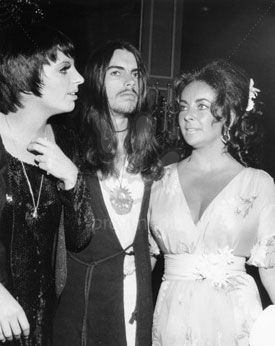
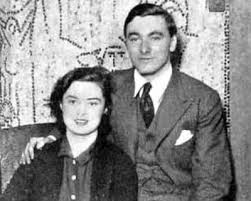
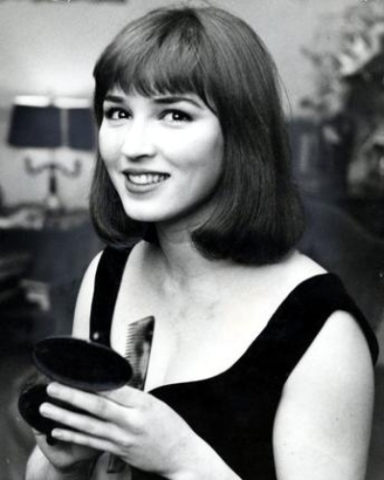
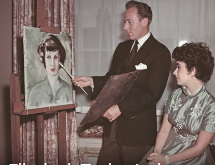

Pynchon Wittgenstein and Cornell Grouping
Posted on March 20, 2021 by Royal Rosamond Press

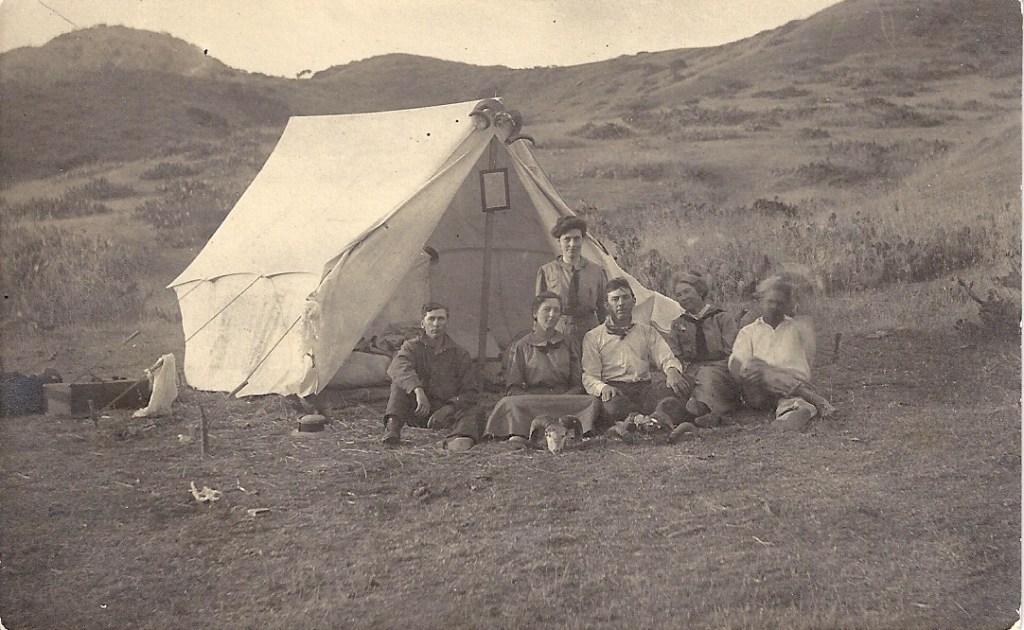

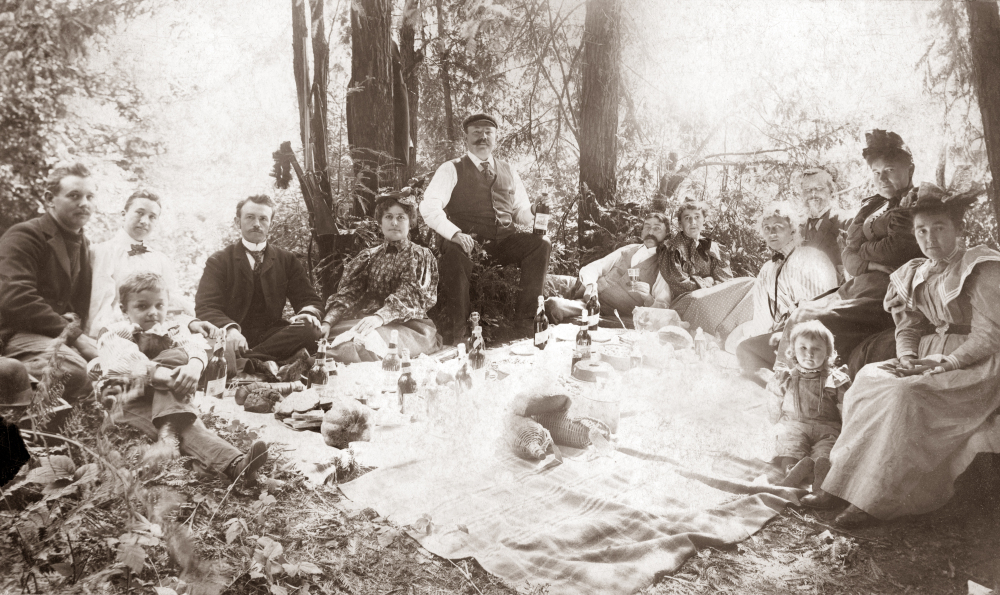


Today is the most momentous day in my life. All my hard work has paid off. Ludwig traveled to Ithaca and hung with Cornell philosophers. My cup runneth over. I am so overjoyed that my grandparents can be put in a group of writers and thinkers – forever! I can remove my sister Christine from the literary hell she was thrown in hours after she died. My relationship with the woman I married, is redeemed. We believed in each other.
John Presco
Wittgenstein’sVisittoIthaca.pdf (cornell.edu)
Lillian of the National Velvet
Posted on August 19, 2017 by Royal Rosamond Press







Elizabeth Taylor and Mickey Rooney starred in “National Velvet” in 1944.
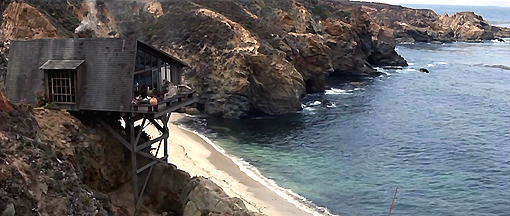
An 18-year-old Gene Tierney, who was then appearing on Broadway, was offered the role of Velvet Brown in 1939. Production was delayed, however, so Tierney returned to Broadway.[5] Much of the film was shot in Pebble Beach, California, with the most-scenic views on the Pebble Beach Golf Links[6] (with golf holes visible in the background).
Philip Boileau & Magazine Beauties
Posted on August 20, 2013 by Royal Rosamond Press


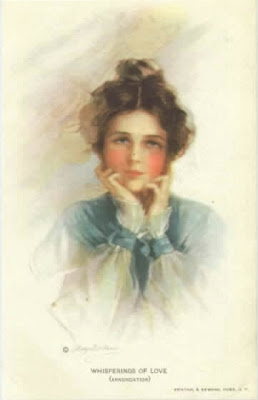
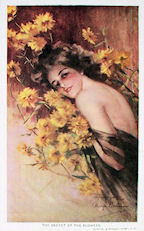
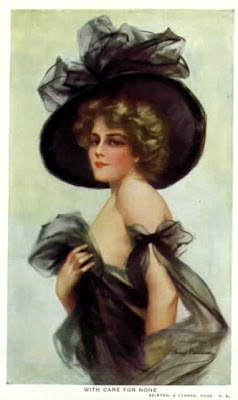


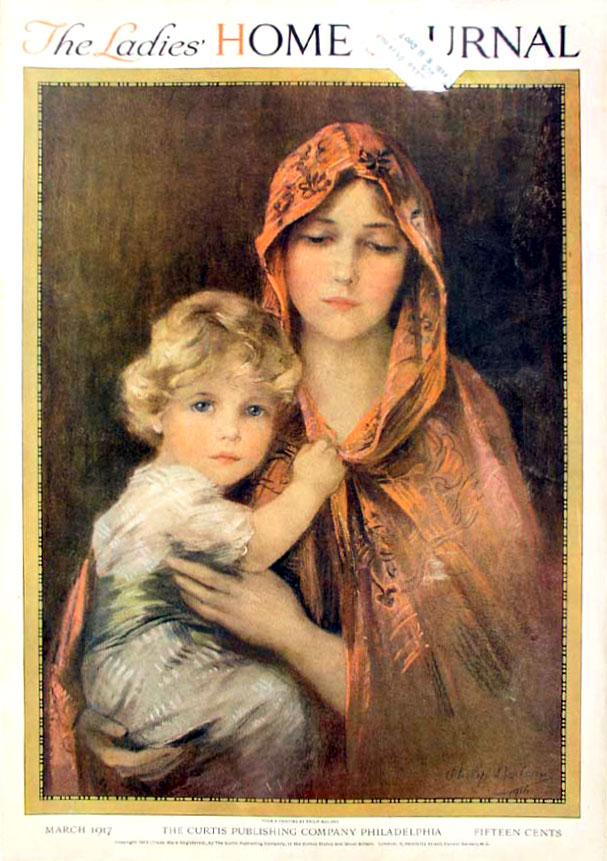
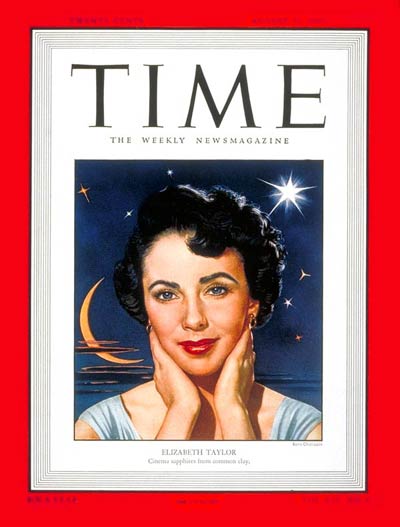
“Christine worked almost exclusively from photographs and
figures she cut from magazines like Vanity Fair and Vogue and
Glamour,” Garth recalls. “That’s why the women in her middle period
were so exquisite – the inspiration for them came from elegant
magazines that set the standard.”
Rena Easton looked for her sister to be on the cover of a famous magazine in July of 1970. Rena has a lot to do with the marriage of my late sister into the Benton family. American magazines held beauty contests for seventy years. Jessie Benton came close to being the Queen of America.
Rena and I were meant to get married. I should have put Robert and James in the back seat, like tramps, and kept them there. I should have taught Rena how to drive, and if James gave me any lip, I would kick him out of the car like his buddy Brian did to me when he kidnapped Rena.
Rena would have been kin to real artists and writers. She should have been the Muse of Muses, painted by many famous artists. Fate had much in store for this beautiful woman.
The artist, Philip Boileau, was the son Susan Taylor Virginia McDowell Benton, the sister of Jessie Benton, the daughter of Thomas Hart Benton, whose grandson was the famous artist of the same name, who was the cousin of Garth Benton, who married Christine Rosamond Presco, who is kin to Elizabeth Rosemond Taylor, according to Jimmy Rosamond, the Rosamond Family genealogists.
Elizabeth Taylor appeared on the cover of LIFE magazine, and was on the cover of numerous magazines, as were the beautiful women painted by Boileau, that resemble Rosamond Women. No one, but I, knew of these relations after the death of the world famous artist ‘Rosamond’.
Recently two paintings by Andy Warhol of Liz Taylor sold for a hundred million dollars. ‘The Men In Her Life’ sold for $60,000,000 million dollars. Eddie Fisher is in this Warhol work, he the father of the actress , Carrie Fischer, who wrote a screenplay about my later sister, who is the mother of the artists, Drew Benton.
Christine and Drew are kin to John Fremont who was a co-founder of Republican Party, and its firs Presidential Candidate. Three years ago I registered as a Republican in order to stand in the way of the take over my kindred’s party by the Evangelical Cult.
Jon Presco
The artist, Philip Boileau, was the son Susan Taylor Virginia McDowell Benton, the sister of Jessie Benton, the daughter of Thomas Hart Benton, whose grandson was the famous artist of the same name, who was the cousin of Garth Benton, who married Christine Rosamond Presco, who is kin to Elizabeth Rosemond Taylor, according to Jimmy Rosamond, the Rosamond Family genealogists.
Baron Charles Henri Philip Gauldree De Boilleau was born 1823 in Toulouse, France. He married Susan Taylor Virginia McDowell Benton June 04, 1855 in Washington D.C.. He died in February, 1894. Susan Taylor Virginia McDowell Benton, daughter of Senator Thomas Hart Benton and Elizabeth McDowell , was born 1833 in Cherry Grove, Rockbridge Co., VA. She died March 08, 1874 in Paris, France.
Children of Baron Charles Henri Philip Gauldree De Boilleau and Susan Taylor Virginia McDowell Benton are:
15. SUSAN TAYLOR VIRGINIA MCDOWELL4 BENTON (THOMAS HART3, ANN “NANCY”2 GOOCH, WILLIAM1) was born 1833 in Cherry Grove, Rockbridge Co., VA, and died 08 March 1874 in Paris, France. She married BARON CHARLES HENRI PHILIP GAULDRÉE DE BOILLEAU 04 June 1855 in Washington, DC. He was born 1823 in Toulouse, France, and died February 1894.
Children of SUSAN BENTON and CHARLES DE BOILLEAU are:
i. PENSÉE5 DE BOILLEAU, b. Abt. 1856; d. Unknown.
ii. BENTON GAULDRÉE DE BOILLEAU, b. February 1858, Calcutta, India (British); d. Unknown; m. MARIE BEDIENT DE GUION, 14 June 1898, St. Patrick’s Cathedral, New York City, NY; b. 14 May 1861, New York City, New York Co., NY; d. Unknown.
iii. CHARLES GAULDRÉE BOILLEAU, b. Abt. 1862; d. 29 December 1901, Loughborough Junction, England.
iv. ARTIST – PEGGY GIRL PHILIP GAULDRÉE BOILLEAU/BOILEAU, b. 17 July 1863, Quebec, Canada; d. 18 January 1917, New York City, New York Co., NY; m. EMILY GILBERT, 09 October 1907, The Church of the Transfiguration, Manhattan, New York City, New York Co., NY; b. 02 August 1886, Quakertown, Bucks Co., PA; d. 13 May 1951.
v. DESIRÉE DE BOILLEAU, b. Abt. 1866; d. Unknown.
vi. HUBERT LÉON MACDOWELL DE BOILLEAU, b. 19 September 1868, Versailles, France; d. Unknown.
vii. MARY DE BOILLEAU, b. Bet. 1870 – 1872, France; d. Unknown.
viii. PAULINE DE BOILLEAU, b. Bet. 1870 – 1872, France; d. Unknown.
16. THOMAS HART4 BENTON (NATHANIEL3, ANN “NANCY”2 GOOCH, WILLIAM1) died Unknown. He married MARY ELLEN EASON. She died Unknown.
Children of THOMAS BENTON and MARY EASON are:
27. i. COLONEL MAECENAS EASON5 BENTON, b. 29 January 1848, Dyer Co., TN; d. 27 April 1924, Springfield, Greene Co., MO.
ii. JESSIE BENTON, b. 1857; d. Unknown.
iii. THOMAS BENTON, b. 1859; d. Unknown.
iv. DOLLY E. BENTON, b. 1861; d. Unknown.
v. SAMUEL A. BENTON, b. 1863; d. Unknown.
vi. FANNY M. BENTON, b. September 1869; d. Unknown.
Generation No. 5Descendants of William GOOCH, Sr.
Gavin Newsom For The Arts
Posted on May 12, 2021 by Royal Rosamond Press
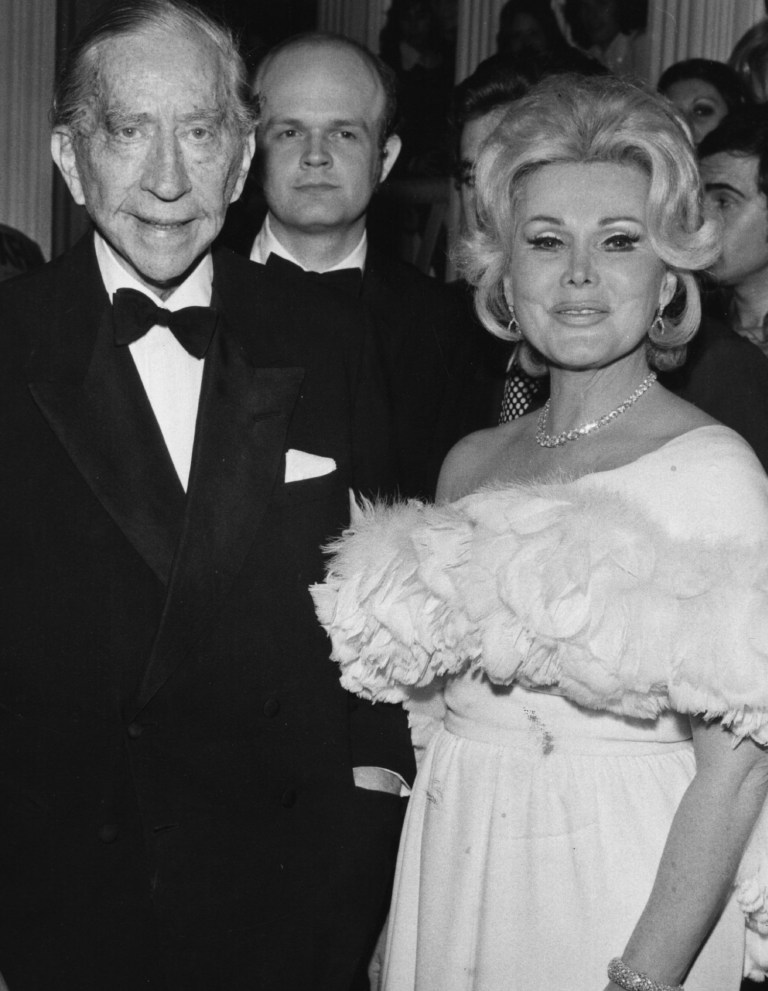
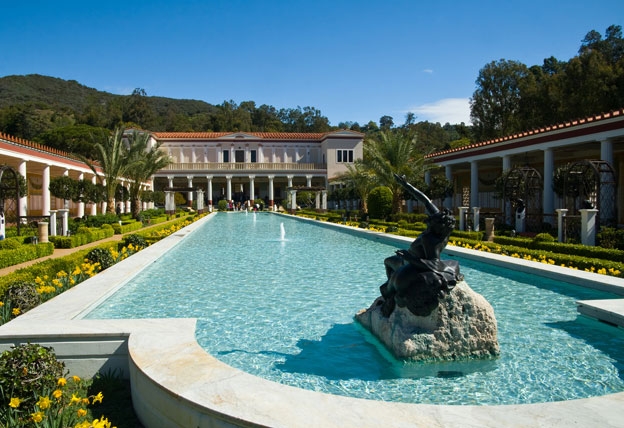

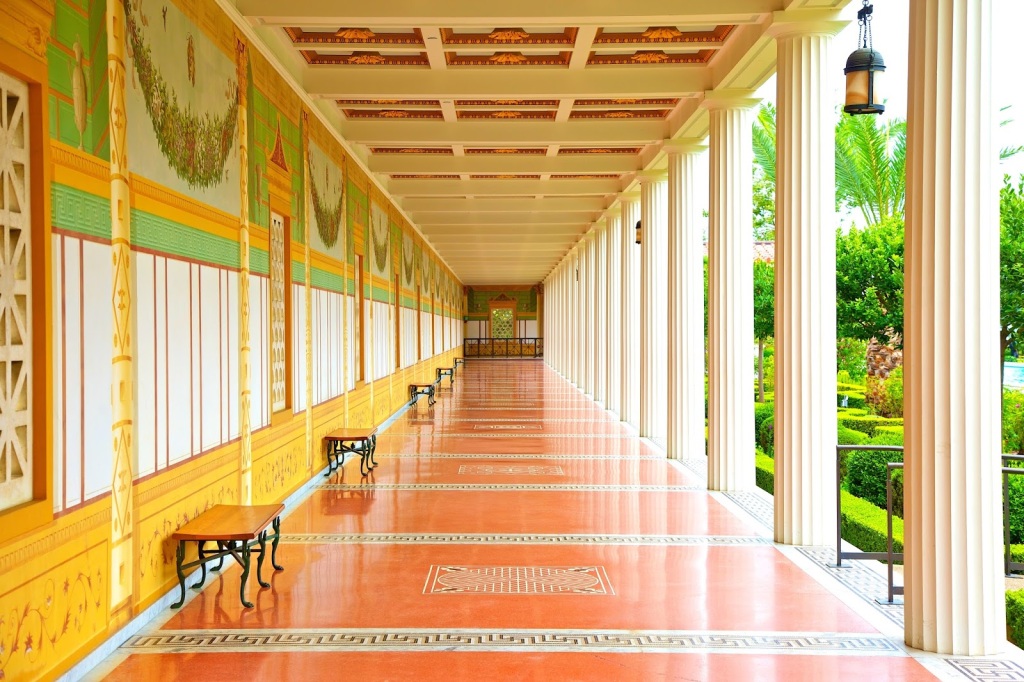
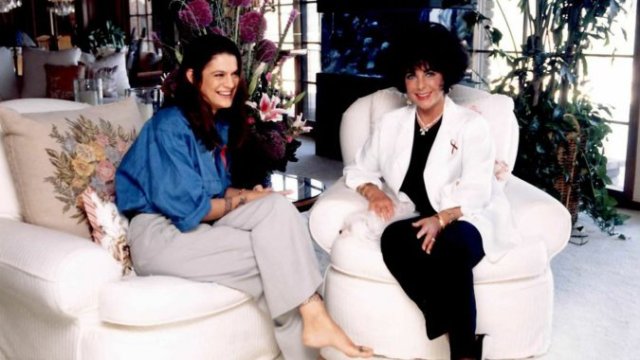


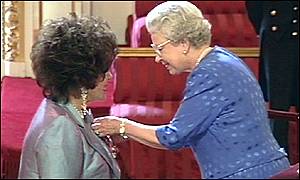
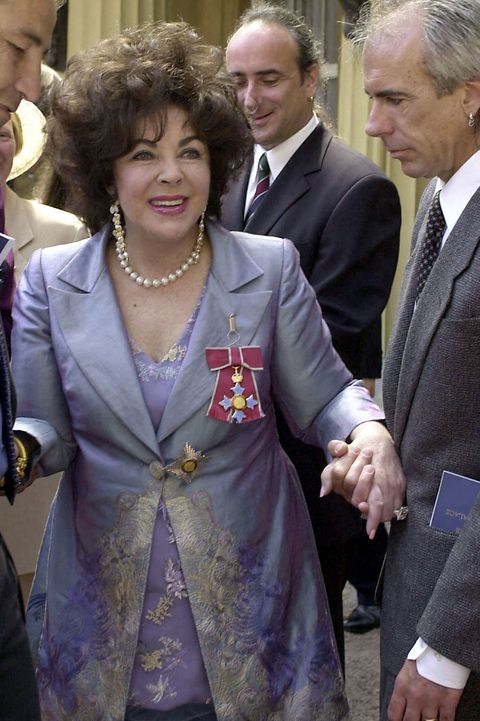
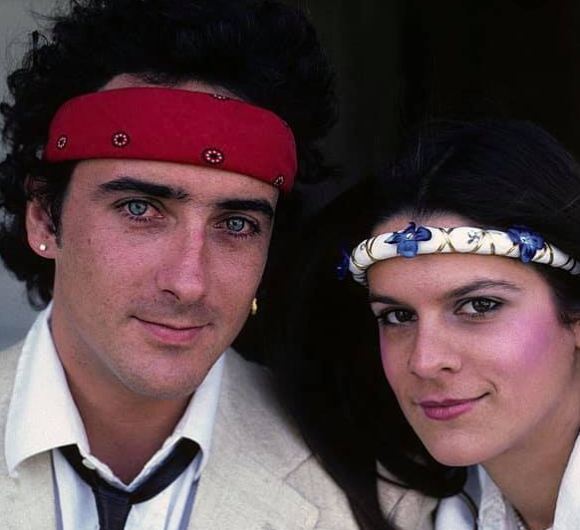

On cue, Governor Gavin Newsom held a press conference and announced massive aide for the Homeless and The Arts. I had just sent my business proposal to the City Government of Belmont, who have no Arts Program that I am aware of. I had talked with a friend about getting Grace Slick to do paintings in Charlatan Square as part of my Cultural Package for the Belmont that needs to get the Governor’s attention, being, I am kin to Elizabeth Rosemond Taylor, as is Belmont Pioneer, Carl Janke. Michael Wilding married Aileen Getty, and thus Carl Janke is in the Getty Family Tree. This Getty Tree For The Arts adopted Gavin when he was a teenager. The J. Paul Getty father and son moved to England. Junior was Knighted by the Queen and was titled “Sir” after he became a British subject. Liz Taylor was Knighted by the Queen for her contribution to the Film Industry that made California great.
John Presco
President: Belmont Soda Works
Buck Institute of Eternal White Supremacy
Posted on July 23, 2020 by Royal Rosamond Press




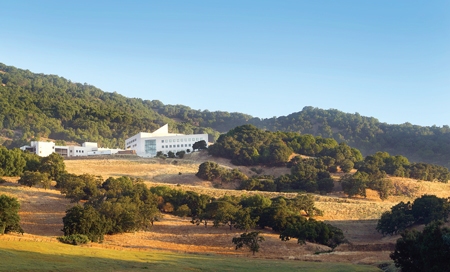
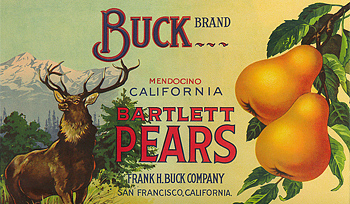

I am going to bring to the attention of BLM that the Buck Institute has become the ultimate in White Power Supremacy by spending millions of dollars delegated to the poor, to find a solution for aging that only white people can afford – or would want! Buck goes with the movie Zardoz and Trump’s plan for a statuary garden for Immortals.
I am looking to sue the law firm of Robert Brevoort Buck. As a settlement Buck will fund and archive my blog, Royal Rosamond Press, for an infinity!
I also want to be president of Alcohol Justice for the few years I have left. The Buck Institute should be retooled to deal with COVID-19 and how it affects Black and Poor People.
John Presco
President: Royal Rosamond Press
The racial makeup of the county was 84.0% White, 2.9% Black or African American, 0.4% Native American, 4.5% Asian, 0.2% Pacific Islander, 4.5% from other races, and 3.5% from two or more races. 11.1% of the population were Hispanic or Latino of any race.
Largest city: San Rafael (population) Novato …
County seat: San Rafael
Named for: Chief Marin, “great chief of the tribe …
Highest elevation: 2,574 ft (785 m)
The Battle of the Bequest
By Ruth Marcus
May 20, 1986It is the northern California version of Dickens’ “Bleak House,” played out in a courtroom designed by Frank Lloyd Wright.When she died at age 79 in 1975, Beryl H. Buck, the childless widow of the heir to a real estate and oil fortune, left most of her estate — oil stocks worth about $10 million — to serve the needy of Marin County, Calif., where hot tubs far outnumber homeless people.
At last count, the Leonard and Beryl Buck Foundation is worth $409 million — yielding an annual income of some $30 million to be spent in the nation’s second-wealthiest county of more than 50,000 residents. The San Francisco Foundation, which Buck left in charge of doling out the money, has been in court since February seeking permission to spend it elsewhere.
The San Francisco Foundation contends that Buck could not have foreseen the vast increase in her estate’s value and that the restriction is senseless when other counties in the San Francisco Bay area struggle, with much less money, to serve many more needy people.
The county, Buck Foundation trustee John Elliott Cook and the state attorney general counter that the San Francisco Foundation is trying to sabotage the will, substituting itsld,10 vision for Buck’s clearly stated views.
Cook was Buck’s longtime attorney and neighbor and the author of her will. He and the county are trying to oust the San Francisco Foundation from its role administering what Marin residents call the “Buck bucks.” The foundation denies the allegations of Cook’s lawyer, Ronald Hayes Malone, that it “covertly connived to break the will and do away with the restriction even “before they got their hands on the money.”
The issue in Estate of Beryl H. Buck, Deceased, currently being heard in architect Wright’s distinctive Marin Civic Center a dozen miles north of the Golden Gate Bridge, comes down to the meaning of 36 words in Buck’s will.
Buck, who moved to the county in 1935 with her husband, physician Leonard Buck, directed that the trust money “shall always be held and used for exclusively nonprofit charitable, religious or educational purposes in providing care for the needy in Marin County, California, and for other nonprofit charitable, religious or educational purposes in that county.”
“There is probably no one living, other than lawyers, who could not understand exactly what these words say and mean,” Marin County Counsel Douglas H. Maloney wrote in his brief to Judge Homer B. Thompson, brought in from Santa Clara County after the foundation complained that Marin judges could not be fair.
The bequest came from a fortune amassed by Buck’s husband’s father, Frank H. Buck, an itinerant land speculator who purchased some hill property and desert land near Los Angeles in the late 1800s. His hills became a large chunk of downtown Beverly Hills, and his desert turned out to contain rich oil reserves.
His daughter-in-law left 69,156 shares of stock in the oil company, Belridge Oil, in trust for the people of Marin. With oil prices soaring in 1979, Belridge was sold to Shell Oil Co. for $3,665 per share. That made Buck’s bequest worth $253 million, and it has been multiplying ever since.
The money was freed later that year, after an initial round of legal wrangling over the will. The foundation has spent about $150 million in Marin, funding bicycle paths, a study of French intensive gardening, mobile animal shelters, energy-saving devices for private schools and more traditional charitable grants.
More than $100,000 has gone to encourage the development of high school sports, $800,000 to support the Marin Symphony and more than $6 million to buy and preserve 3,300 acres of vacant land in a county that is already two-thirds open space.
A high school theater group received $165,000; the Marin Education Foundation spent $57,000 in Buck funds one year by handing out $200 to every high school senior graduating in the top 10 percent of the class.
“It’s overreplenishing the affluent,” said San Francisco Foundation lawyer Michael J. Coffino. “The grants in Marin are so bloated as to be almost ludicrous.”
In the past five years, Coffino noted, the San Francisco Foundation has spent more than $6 million to help the 1,500 residents of Marin City, where the county’s poor are clustered. Of the county’s 240,000 residents, 1 to 4 percent have incomes below the poverty level, according to official estimates; 930 families receive Aid to Families With Dependent Children, and 300 individuals receive general assistance.
*”When you look at it in terms of the pressing and desperate needs in the Bay Area, the money is really being wasted,” said Anita P. Arriola, an attorney with Public Advocates, a San Francisco public interest law firm that has entered the case on the side of the San Francisco Foundation.
To change that situation, the foundation has invoked an ancient legal doctrine called cy-pres — from the Norman French cy pres comme possible (as close as possible) — that is used to modify a charitable bequest when circumstances make it impossible or impracticable to use it as the giver intended.
“To the extent she Buck knew what she was giving, that’s her business,” Coffino said. But, he said, “given the astronomical escalation” in the value of the trust, “we have to start asking the question ‘What is wise?’ ” Judge Thompson, however, has made that argument more difficult to advance by barring evidence about needs outside the county.
The case “has to stand — or fall — on its own feet in Marin County,” Thompson said. It “has nothing to do with how the money can be spent elsewhere.”
Those opposed to sharing the wealth argue that Buck was well aware of the bequest’s potential value and that it can be spent fruitfully in Marin, perhaps through a large project such as a major medical research center.
“Our view is you can’t change people’s wills on the basis of efficiency,” said Marin lawyer Maloney.
The county began presenting its case this month. Witnesses described Buck’s dedication to Marin and her particular vision of the needy, especially those whose comfortable lives have been disrupted by a major illness or other catastrophe.
“She always told me the government will take care of the poor and the wealthy can take themselves,” Buck’s nephew Leland Hamilton testified. “It’s the middle class who need help.”
The trial is expected to last into August. Marin residents, not surprisingly, appear solidly in favor of keeping the money where it is. Adam Morgan, an Iranian immigrant who operates Spotless Cleaners in San Anselmo, has collected nearly 30,000 signatures on a petition in support of the will and printed 6,000 “The Buck Stops Here” bumper stickers.
“She should be able to make her decision how to use the money,” said Morgan, whose establishment sports a story-high mural, titled “The Top 10 Women of Miraculous Achievement,” dedicated to Buck. “The principle of who is poor and who is rich is secondary.”
